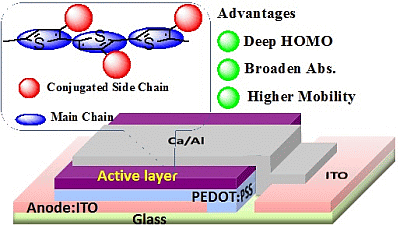Polythiophenes Comprising Conjugated Pendants for Polymer Solar Cells: A Review
Abstract
Share and Cite
Wang, H.-J.; Chen, C.-P.; Jeng, R.-J. Polythiophenes Comprising Conjugated Pendants for Polymer Solar Cells: A Review. Materials 2014, 7, 2411-2439. https://doi.org/10.3390/ma7042411
Wang H-J, Chen C-P, Jeng R-J. Polythiophenes Comprising Conjugated Pendants for Polymer Solar Cells: A Review. Materials. 2014; 7(4):2411-2439. https://doi.org/10.3390/ma7042411
Chicago/Turabian StyleWang, Hsing-Ju, Chih-Ping Chen, and Ru-Jong Jeng. 2014. "Polythiophenes Comprising Conjugated Pendants for Polymer Solar Cells: A Review" Materials 7, no. 4: 2411-2439. https://doi.org/10.3390/ma7042411
APA StyleWang, H.-J., Chen, C.-P., & Jeng, R.-J. (2014). Polythiophenes Comprising Conjugated Pendants for Polymer Solar Cells: A Review. Materials, 7(4), 2411-2439. https://doi.org/10.3390/ma7042411






